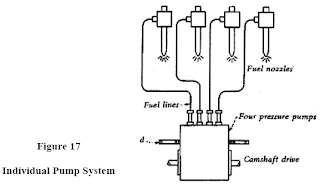welding basics
Welding is a process of joining materials such as metals and plastics with heat or pressure. It is the most widely used today to join metals, and is widely used in the production of automobiles, ships, trains, buildings and bridges. Compared with welding and brazing which introduces a soft substance to hold pieces original cast together, welding metal melts to form a solid and a strong bond.
Welding had been practiced since antiquity. The most popular method at this time was forge welding was used by blacksmiths. This method used to weld two metals together fighting over a hot charcoal.
Today, modern technology has allowed the welders to work with much greater precision and greater weld compared to the past. The First World War provided the impetus for the development of welding technologies, as many countries were seeking the best and most efficient ships and aircraft welding for war. Thereafter, the welding technology became a modern art could be done manually, and the use of robotic machines. In particular, it can be done under different environmental conditions, such as underwater, on the site and in workshops. Despite these rapid advances, welding seems a very high risk and dangerous process that could expose a welder for burns, poisonous or toxic gases and even eye damage.
The most common welding methods practiced today are gas, arc spot, resistance, electron beam, laser and robotic welding.
Gas welding is commonly referred to as oxyacetylene where oxygen gas mixture to produce a high temperature flame in the torch to melt the edges of metal to be welded. Therefore, oxyacetylene welding usually requires two tanks or bottles to store oxygen and acetylene fuel. This method is one of the oldest techniques used and is still practiced around the world. This is mainly because the equipment including storage bottles are easy to transport. This is widely used to join pipes and simple manufacturing.
Arc welding uses an electric arc between an electrode and the subject material while melting together to create a strong bond or a weld. Arc welding is widely used in industrial applications, which is cheap. The problem with the arc process is that sometimes the welds can be fragile and weak because of oxygen and nitrogen in the atmosphere. To overcome this problem, shielded gas such as hydrogen, argon and helium are used.
Resistance welding uses physical pressure and the heat of welding materials. The heat is generated by high resistance to electric current passing through the material to be welded. This method is popular among many other industrial applications because it is easily automated and economical high production volumes. Because of its high initial investment costs may not be feasible for use in low production volumes.
Spot welding is another form of resistance welding used to join four sheets of metal. In spot welding, two electrodes are used to weld metal plates are clamped together by applying pressure and sending a high current through them. welding can be automated and energy efficient, so it is widely used in many industrial applications such as automotive joint.
electron beam welding process uses electron beam high-speed materials. When high speed electrons bombard the material, the heat is too high, resulting in a fusion of materials and the creation of a strong joint bonded. The electron beam is produced using a hot cathode emitter made of tungsten. This method is a very precise, and popularly used in aerospace and semiconductor industry.
Laser welding process to join multiple pieces of metal by means of a concentrated heat source. This method is not only accurate and efficient, but also because of the heat loss very little about the specific area. In addition, the laser can penetrate deeply into the heat of the metals to be welded. laser welding is used in automobile assembly plants automated.



Comments